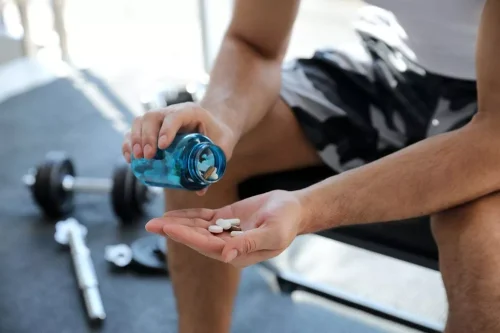
Speak with your doctor if you have become physically dependent on a medication or other substance. Other common substances that cause dependence are nicotine and pain relievers, particularly narcotics. So unless it is urgent, gradually cutting down on the amount and how often you use it should make it easier. The National Institute on Alcohol Abuse and Alcoholism (NIAAA) defines a standard drink as one 12-ounce bottle of beer, one 5-ounce glass of wine, or 1.5 ounces of distilled spirits. Men may be at risk of AUD if they exceed 14 standard alcoholic drinks per week, and women if they drink more than seven.
Medical Marijuana

Feeling like you’re not in control of your actions, being unable to complete necessary tasks in your day or ignoring concerns about your drinking habits from loved ones are signals that you may have a problem with alcohol. Along with the weight disparities that allow higher alcohol use for men, the differences in the makeup of women’s bodies work against them when consuming alcohol. These factors make females more susceptible to severe health consequences from heavy drinking than their male counterparts. Other reports show that since people are not going out and drinking in restaurants and bars, they’re spending their money on larger packs of alcohol to drink at home. Nielsen says that boxed wine sales went up 44% during the first month of the pandemic crisis, and people are opting to buy 24- or 30-packs of beer or cider as compared to the traditional 6-pack.
Adults: prevalence of use, age of first use
- Nevertheless, many will require access to specialist treatment by virtue of having more severe or chronic alcohol problems, or a higher level of complications of their drinking (for example, social isolation, psychiatric comorbidity and severe alcohol withdrawal).
- The mortality rate is high in this population, nearly four times the age-adjusted rate for people without alcohol dependence.
- In the US, studies of this population typically report prevalence rates of 20 to 45%, depending on sampling methods and definitions (Institute of Medicine, 1988).
Upon admission to an outpatient clinic for treatment of mood disorders, she met all of the diagnostic criteria for substance dependence and was advised to dramatically limit her caffeine intake. Once she was able to limit her use to less than 12 ounces of soda a day, both her mental and physical health gradually improved. Despite the prevalence of caffeine use and the large number of people who confess to suffering from caffeine addiction, this was the first published description of soda dependence appearing in scientific literature. Activation of the HPA axis and CRF-related brain stress circuitry resulting from alcohol dependence likely contributes to amplified motivation to drink. For example, animal studies have indicated that elevation of corticosteroid hormone levels may enhance the propensity to drink through an interaction with the brain’s main reward circuitry (i.e., mesocorticolimbic dopamine system) (Fahlke et al. 1996; Piazza and Le Moal 1997). Similarly, systemic administration of antagonists that selectively act at the CRF1 receptor also reduced upregulated drinking in dependent mice (Chu et al. 2007) and rats (Funk et al. 2007; Gehlert et al. 2007).
Neurobiological Effects of Polysubstance Use and Emerging Drug Products
- I have heard that it is not chemical, but have lived with people who needed the alcohol every night.
- Overall lifetime substance use was generally higher in NSDUH than NESARC, perhaps due to methodological differences between the studies (self-administered substance use questions in NSDUH, interviewer-administered questions in NESARC) (Grucza et al., 2007).
- Psychological dependence, or drug craving, is a recent addition to the diagnostic criteria for substance use disorder in DSM-5.
- There is therefore some further progress needed to make alcohol treatment accessible throughout England.
Media exposure helps influence social norms about alcohol through advertising, product placements, and stories in a wide range of sources, including movies, television, social media, and other forms of entertainment. Although alcohol sales and marketing are highly regulated, people are exposed to a wide variety of alcohol and liquor advertisements, especially in the United States. Whether these advertisements directly result in an increase in consumption has been the topic of many public policy debates and much alcohol and consumer research.
- This latter finding suggests that elevated alcohol self-administration does not merely result from long-term alcohol exposure per se, but rather that repeated withdrawal experiences underlie enhanced motivation for alcohol seeking/consumption.
- Although alcohol sales and marketing are highly regulated, people are exposed to a wide variety of alcohol and liquor advertisements, especially in the United States.
- While no single gene for alcohol dependence has so far been identified, a range of genes that determine brain function have been implicated (Agrawal et al., 2008).
Related NICE guidance and evidence
This system also contributes to reward by affecting the function of dopamine neurons and the release of dopamine in the nucleus accumbens. This complex web of consequences illustrates why mental health is a central focus in alcohol recovery programmes. Medical https://ecosoberhouse.com/article/diabetes-and-alcohol-can-diabetics-get-drunk/ detox involves the use of prescription and over the counter medications to help people throughout the detox process. Professional detox centers may even be able to eliminate many withdrawal symptoms, making the process as easy and as comfortable as possible.
There are a couple questions I get a lot when people find out I work at a treatment center. The first is how to tell if you are an alcoholic, which I covered in a previous blog. The second is whether binge drinking is the same thing as alcoholism, or if it is just harmless fun. The dependence-producing properties physiological dependence on alcohol of alcohol have been studied extensively in the last 20 years. Alcohol affects a wide range of neurotransmitter systems in the brain, leading to the features of alcohol dependence. The main neurotransmitter systems affected by alcohol are gamma-aminobutyric acid (GABA), glutamate, dopamine and opioid (Nutt, 1999).


